Guest
Guest
 |  Subject: BREAKING: Underground Tunnels Found Beneath Pakal Tomb in Maya Site of Palenque Subject: BREAKING: Underground Tunnels Found Beneath Pakal Tomb in Maya Site of Palenque  Tue Jul 26, 2016 8:25 am Tue Jul 26, 2016 8:25 am | |
| 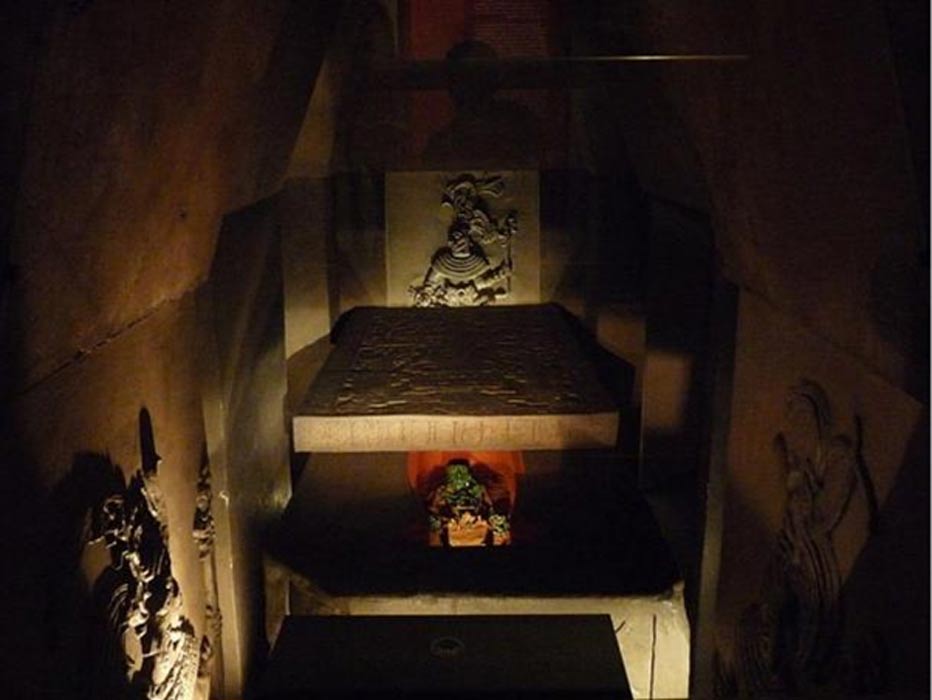 25 JULY, 2016 - 21:44 APRILHOLLOWAYBREAKING: Underground Tunnels Found Beneath Pakal Tomb in Maya Site of PalenqueK'inich Janaab' PakalMaya civilizationFunerary artTomb(Read the article on one page)Archaeologists at the world-renowned Maya site of Palenque in Mexico have made a surprising discovery beneath the Temple of Inscriptions, the impressive funerary monument built for Maya ruler Pakal – underground water tunnels that appears to have been created as a symbolic path to guide Pakal to the afterlife.Archaeologist Arnoldo González Cruz, project manager at Palenque, announced at a press conference that the finding consists of nine channels of about 17 meters in length through which water circulates. The channel is fed by a spring and “reveals complex hydraulic engineering”.Associated Press reports that Gonzalez believes the tomb and pyramid were intentionally built on top of the spring between 683 and 702 AD, and that the tunnels were created to lead water under the funeral chamber and guide Pakal’s spirit to the underworld. Evidence comes from carvings on a pair of stone ear adornments, which say a god "will guide the dead toward the underworld, by submerging (them) into the water so they will be received there." 25 JULY, 2016 - 21:44 APRILHOLLOWAYBREAKING: Underground Tunnels Found Beneath Pakal Tomb in Maya Site of PalenqueK'inich Janaab' PakalMaya civilizationFunerary artTomb(Read the article on one page)Archaeologists at the world-renowned Maya site of Palenque in Mexico have made a surprising discovery beneath the Temple of Inscriptions, the impressive funerary monument built for Maya ruler Pakal – underground water tunnels that appears to have been created as a symbolic path to guide Pakal to the afterlife.Archaeologist Arnoldo González Cruz, project manager at Palenque, announced at a press conference that the finding consists of nine channels of about 17 meters in length through which water circulates. The channel is fed by a spring and “reveals complex hydraulic engineering”.Associated Press reports that Gonzalez believes the tomb and pyramid were intentionally built on top of the spring between 683 and 702 AD, and that the tunnels were created to lead water under the funeral chamber and guide Pakal’s spirit to the underworld. Evidence comes from carvings on a pair of stone ear adornments, which say a god "will guide the dead toward the underworld, by submerging (them) into the water so they will be received there."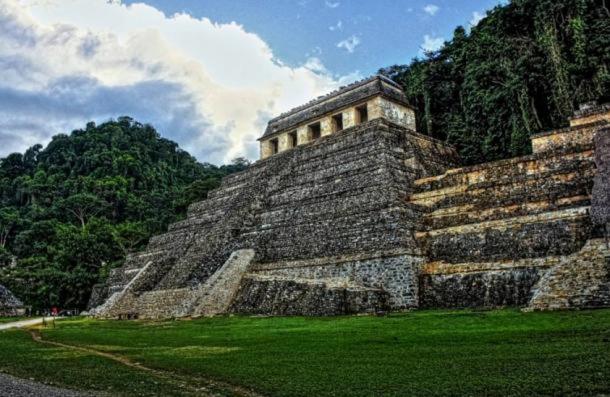 The Temple of Inscriptions, Palenque, Mexico (Daniel Mannerich / Flickr) El Comercio reports that the underground channels were discovered following the use of ground penetrating radar in the Temple of Inscriptions. The program coordinator of Archaeology from the National Institute of Anthropology and History of Mexico, Pedro Sánchez Nava, said that one of the studies revealed underground structures which were worthy of further investigation. DiscoverPalenqueArchaeologyMexicoSarcophagus "We decided to study this data and we discovered that it was complex hydraulic channels carved directly into the bedrock, just below the funeral chamber of Pakal, " said Sanchez [via El Comercio].Sculpture of King K’inich Janaab’ Pakal, or “Pakal the Great”. National Museum of Anthropology, Mexico City. Wikimedia Commons The great Maya city of Palenque is hidden deep in the jungles of Mexico. Known for its stunning architecture, sprawling temples, artwork and treasures, it has been luring explorers, tomb raiders and archaeologists here for centuries. The Temple of the Inscriptions ranks among the most famous monuments of the Maya world and is the largest Mesoamerican stepped pyramid structure. The Temple was specifically built as the funerary monument for K'inich Janaab' Pakal, ruler of Palenque in the 7th century A.D. whose reign over the area lasted almost 70 years. Construction of this monument was commissioned by Pakal himself in the last decade of his life, and was completed by his son and successor K'inich Kan B'alam II a short time after 683 AD. The site consists of a "temple" structure that sits atop an eight-stepped pyramid for a total of nine levels. On top of the pyramid sits the temple which is comprised of two passageways divided by a series of pillars, and covered by a vaulted roof. Both the temple and the pyramid had a thick layer of stucco on it and were painted red, as was common for many Maya buildings.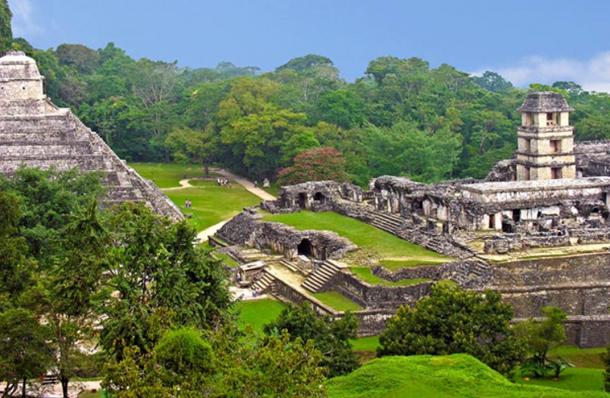 The Maya site of Palenque, Mexico (Dennis Jarvis / Flickr) The finding of Pakal’s sarcophagus in the 20th century stunned the world, and has been surrounded in controversy ever since. The secret opening to his tomb was discovered by Mexican archaeologist Alberto Ruz Lhuillier in 1948 and it took another four years to clear the rubble from the stairway leading down to Pakal’s tomb. His skeletal remains were still lying in his coffin, wearing a jade mask and bead necklaces. The tomb itself is remarkable for its large, elaborately carved sarcophagus, and stucco sculpture decorating the walls, which depict the ruler's transition to divinity and figures from Maya mythology.The much-discussed symbolism of the sarcophagus lid is commonly believed to depict Pakal in the guise of one of the Maize Gods emerging from the underworld with the Tree of Life pattern in the background. However, not everyone agrees with this interpretation. A more alternative hypothesis is that Pakal is depicted operating a type of machinery or vehicle. When turned on its side, Pakal appears to be operating a complex series of controls.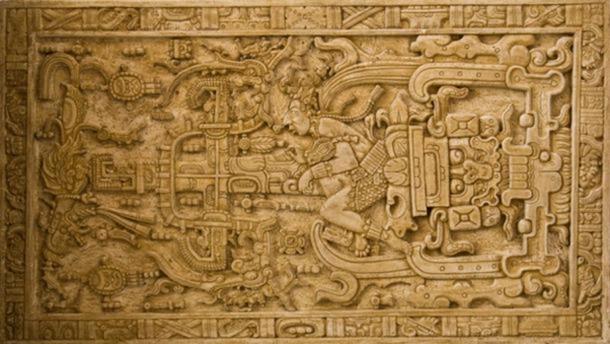 The magnificent sarcophagus lid of Pakal. Asaf Braverman / Flickr The newly-discovered underground water channels continue to be excavated and it is hoped that further discoveries may shed more light on the life and death of this powerful ruler.Top image: A reconstruction of Pakal's tomb in the Museo Nacional de Antropología. Wikimedia CommonsExtracts taken from Ancient Origins article ‘Palenque and the Great Temple of the Inscriptions: A Site Built for a King’ by Bryan Hill.By April Holloway |
|
Guest
Guest
 |  Subject: Mexico Finds Water Tunnels Under Pakal Tomb In Palenque Subject: Mexico Finds Water Tunnels Under Pakal Tomb In Palenque  Thu Jul 28, 2016 7:27 am Thu Jul 28, 2016 7:27 am | |
| Mexico Finds Water Tunnels Under Pakal Tomb In Palenque 7/25/2016 07:30:00 PM
Archaeologists at the Mayan ruin site of Palenque said Monday they have discovered an underground water tunnel built under the Temple of Inscriptions, which houses the tomb of an ancient ruler named Pakal.
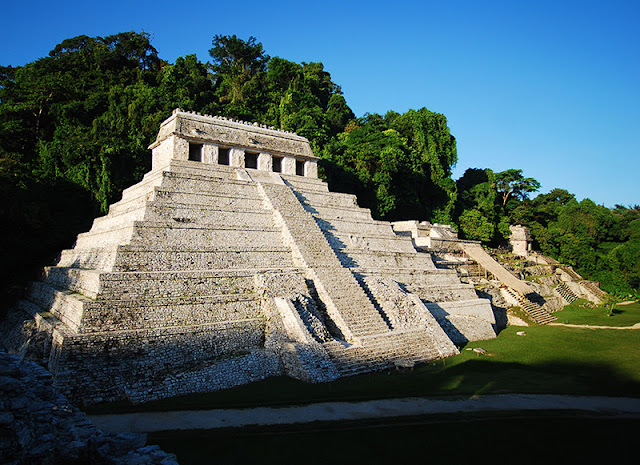 |
Temple of the Inscriptions. Palenque Archaeological Zone [Credit: INAH] |
Archaeologist Arnoldo Gonzalez says researchers believe the tomb and pyramid were purposely built atop a spring between 683 and 702 AD. The tunnels led water from under the funeral chamber out into the broad esplanade in front of the temple, thus giving Pakal's spirit a path to the underworld.
Attention has focused on the heavily carved stone sarcophagus in which Pakal was buried, and which some erroneously believe depict the Maya ruler seated at the controls of a spaceship.
 |
Excavations at the site [Credit: INAH] |
But Gonzalez said Monday that carvings on a pair of stone ear plugs found in the grave say a god "will guide the dead toward the underworld, by submerging (them) into the water so they will be received there."
Pakal, in other words, didn't fly off into space; he went down the drain. "There is nothing to do with spaceships," Gonzalez said.
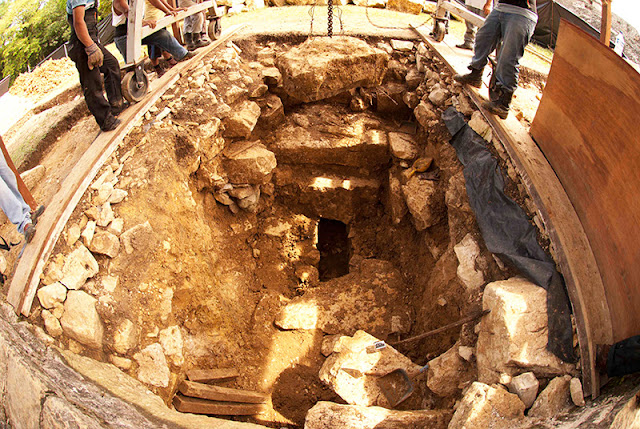 |
Tunnel opening [Credit: INAH] |
The tunnel, which connects to another, is made of stone and is about two feet (60 centimeters) wide and tall.
The director of archaeology for the National Institute of Anthropology and History, Pedro Sanchez Nava, said the theory makes sense in light of other pre-Hispanic peoples such as those who lived at Teotihuacan, near Mexico City, where another water tunnel was found.
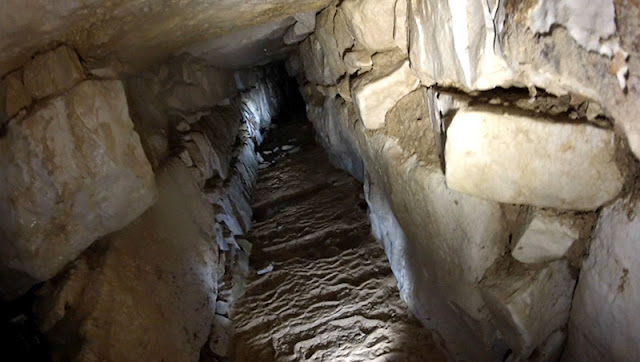 |
Floor of the main conduit [Credit: INAH] |
"In both cases there was a water current present," said Sanchez Nava. "There is this allegorical meaning for water ... where the cycle of life begins and ends."
The dig began in 2012, when researchers become concerned about underground anomalies detected with geo-radar under the area in front of the pyramid's steps.
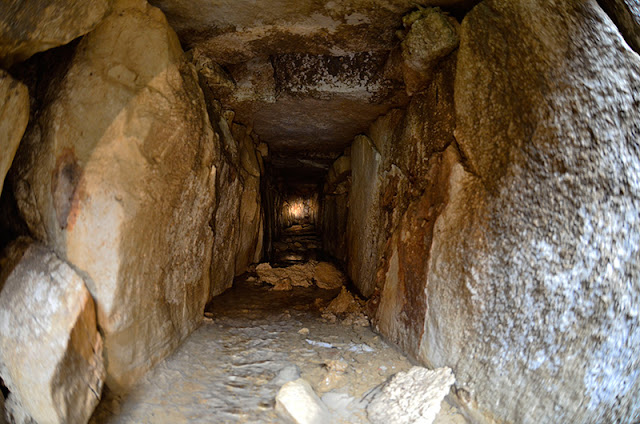 |
View of the stone-built interior [Credit: INAH] |
Fearing a hole or geological fault that could cause the pyramid to settle or collapse, they dug at the spot—and uncovered three layers of carefully fitted stone covering the top of the tunnel.
Gonzalez said the same type of three-layered stone covering has been found in the floor of Pakal's tomb, within the pyramid.
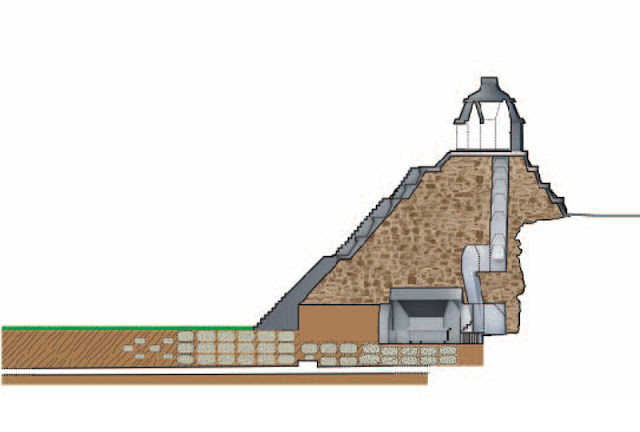 |
Schematic of the Temple of the Inscriptions [Credit: INAH] |
Gonzalez said he believes there is no shaft or connection between the tomb and the tunnel, but adds the conduit hasn't been fully explored yet because it is too small to crawl through.
Researchers had to send a robot with a camera down to view much of the underground horizontal shaft.
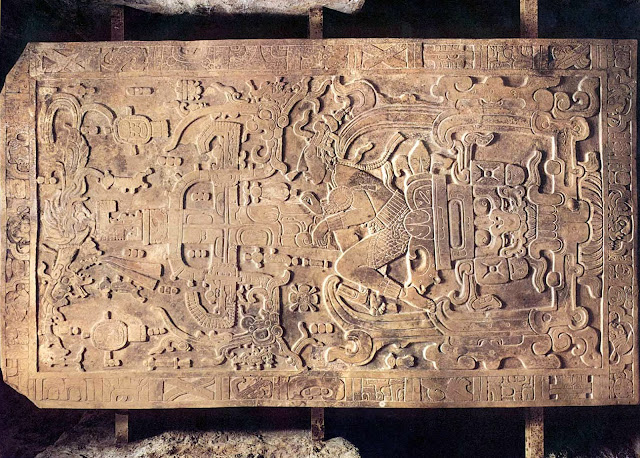 |
Carved lid of the tomb of K'inich Janaab Pakal I in the Temple of the Inscriptions
[Credit: WikiCommons] |
Author Erich von Daniken suggested in his 1968 book "Chariots of the Gods?" that Pakal's position in the engraving on the stone sarcophagus lid resembled the position of astronauts, and he appeared to be seated in a contraption with flames coming out of it and controls.
Experts say that the "flames" are in fact depictions of the Maya's "World Tree" or "Tree of Life," whose roots were believed to reach into the underworld.
Author: Mark Stevenson | Source: The Associated Press [July 25, 2016]
Read more at https://archaeologynewsnetwork.blogspot.com/2016/07/mexico-finds-water-tunnels-under-pakal.html#YDdr0L5TrxdCkDTv.99 |
|





